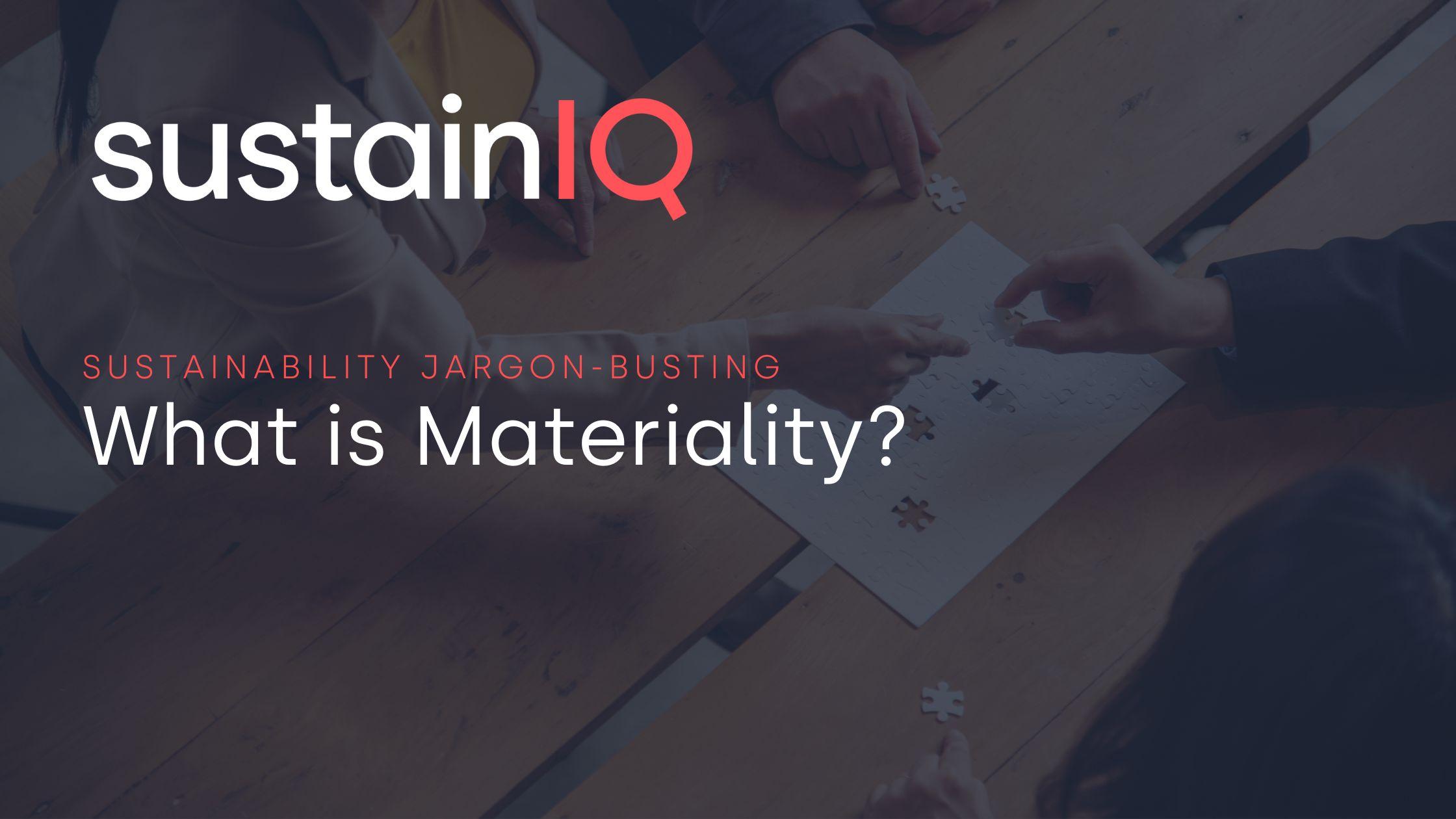Sept 01, 2022 | Conal Love

When starting out on your sustainability journey, you may come across the concept of ‘materiality’. Understanding materiality, what’s involved and why it’s important, is an essential backbone to your sustainability or ESG strategy.
Implementing sustainability initiatives without considering your material impacts as a business can be detrimental, not only to your success, but to local communities, the environment and potentially to economies if you’re a global operator.
In this blog, we’ll help you to understand materiality and why it’s an important first step on your sustainability journey. We’ll also touch on the concept of double materiality, which is gaining traction as a rigorous approach that brings sustainability impact and financial considerations closer together.
What is materiality?
“Materiality is used to ‘filter in’ the information that is or should be relevant to users. Particular information is considered ‘material’ – or relevant – if it could influence the decision-making of stakeholders in respect of the reporting company.” – Global Reporting Initiative
Put simply, materiality aims to identify any relevant business information that is relevant (or material) and could influence or impact stakeholders’ lives.
Within sustainability reporting, it’s good to have an understanding of impact materiality, financial materiality and double materiality.
Impact materiality
Impact materiality is connected to sustainability initiatives. From an impact perspective, those initiatives are material if the actions they involve lead to actual or potential impacts on people or the environment, either positive or negative.
Negative impacts are directly linked to organisations if they occur anywhere in the value chain, meaning that if you are working with a supplier that is found to be involved in questionable or unethical activities, your business is still linked to that threat, putting you at reputational and possibly financial risk.
Financial materiality
Financial materiality in a sustainability context is where projects or initiatives may carry financial implications or impacts that could increase risk or provide opportunities for companies.
A business for example may decide to divest of a particular material it uses as its carbon footprint is higher than an alternative, but the alternative may be priced at a premium, which can often be the case.
At this point, impact materiality and financial materiality have both come into play in decision-making. Leaders must decide what matters more to the business – the cost or the environmental impact?
What is double materiality?
The example we’ve provided is known as double materiality, a concept increasingly used in considering environmental, social & governance (ESG) and sustainability matters.
A sustainability initiative meets the criteria for double materiality if its implementation is considered and presented material from both an impact and financial perspective. On a basic level, a sustainability initiative is doubly material if the action will lead to an impact on cash flow or the valuation of an organisations’ assets.
What is a materiality assessment and why do I need one?
Materiality assessments are designed to help companies determine the relative importance of ESG & sustainability factors to stakeholders and the financial performance of your organisation.
For organisations, the impact of double materiality on decision-making means that materiality assessments are key to the success of any strategy.
Without an assessment, companies cannot know what issues matter most to stakeholders, and therefore you may set off on a path that is not aligned with your customers’, employees’ or wider societal values and goals.
Poor goals and objectives from the start will lead to your strategy having poor performance indicators, making it hard to measure and monitor the impact of business decisions.
From the beginning of your journey, therefore, you should start by conducting an assessment. Speaking to internal and external stakeholders and developing a materiality matrix to help you visualise what matters most (and least) to your stakeholders and to the company, can help simplify decision-making.
I’m struggling to get started.
If you’re only getting started with your sustainability journey, check out our recent blog on 6 steps to getting started, or download our 6 Steps to Success E-Book which can help provide you with a methodology.
If you’re currently conducting a materiality assessment or have already identified your material topics, SustainIQ can help you on the next steps toward identifying baselines and monitoring the performance of your initiatives as you go.
Drop us an e-mail to [email protected], or contact us today to get started.
“Materiality is used to ‘filter in’ the information that is or should be relevant to users. Particular information is considered ‘material’ – or relevant – if it could influence the decision-making of stakeholders in respect of the reporting company.” – Global Reporting Initiative
Put simply, materiality aims to identify any relevant business information that is relevant (or material) and could influence or impact stakeholders’ lives.
